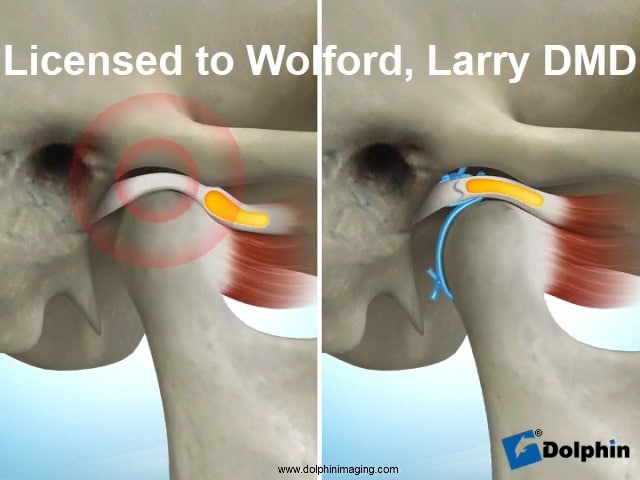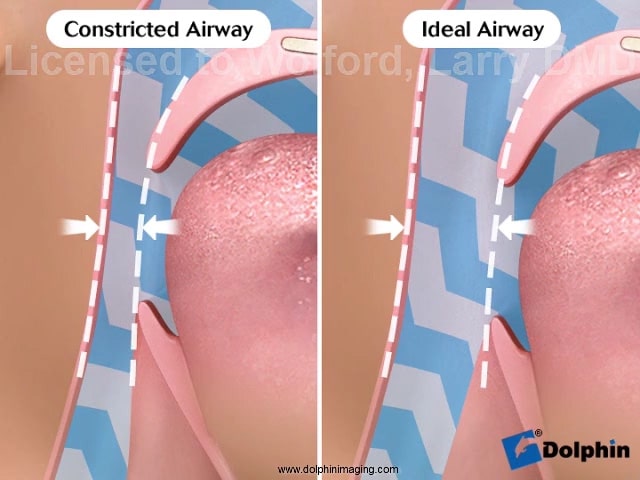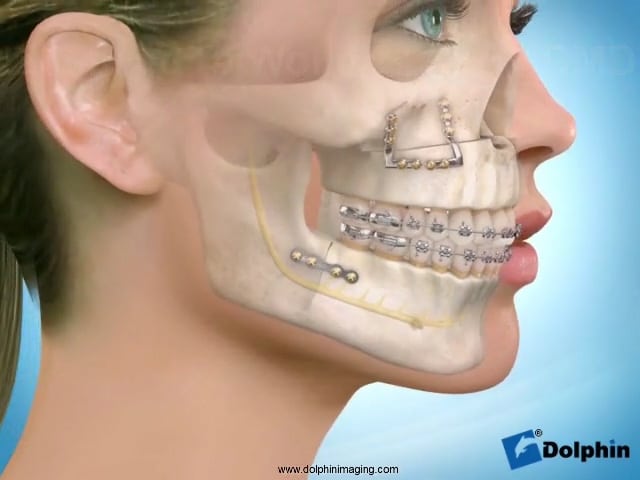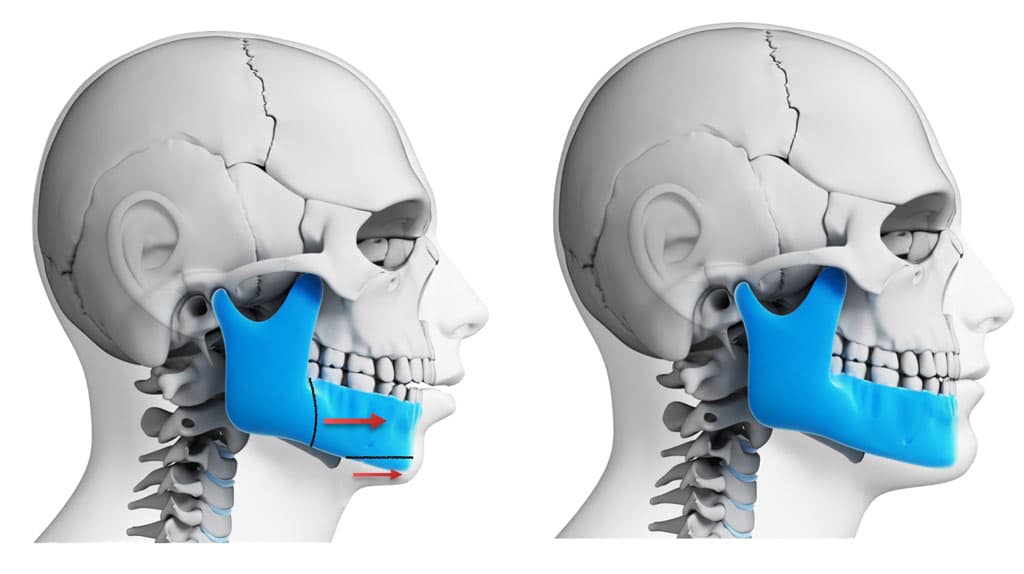Mastering Precision: Transforming Oral and Maxillofacial Surgery
Through Virtual Surgical Treatment Planning with Dr. Larry Wolford
In the field of oral and maxillofacial surgery, precision is paramount. And one pioneering surgeon who has taken precision to the next level is none other than Dr. Larry Wolford. Through his groundbreaking work in virtual surgical treatment planning, Dr. Wolford has revolutionized the way oral and maxillofacial surgeries are performed.
With virtual surgical treatment planning, Dr. Wolford utilizes advanced technology to create a comprehensive roadmap for each patient’s unique surgical needs. By analyzing three-dimensional images, he can precisely plan the surgery, ensuring optimal outcomes and minimizing risks. This innovative approach not only allows for more accurate diagnoses and treatment planning but also enhances patient communication and satisfaction.
Dr. Wolford’s expertise and dedication have earned him recognition as a leading authority in the field. His patients consistently praise his meticulous attention to detail and compassionate care. Thanks to his groundbreaking work, patients can now benefit from safer, more predictable, and transformative oral and maxillofacial surgeries.
If you’re looking to master precision in oral and maxillofacial surgery, Dr. Larry Wolford is the name to know. Join us as we explore the transformative potential of virtual surgical treatment planning and how it’s shaping the future of the field.
The role of virtual surgical treatment planning in oral and maxillofacial surgery
Virtual surgical treatment planning plays a crucial role in oral and maxillofacial surgery. Traditionally, surgeons relied on two-dimensional imaging techniques, such as X-rays and CT scans, to assess patients’ conditions and plan surgeries. However, these methods had limitations in accurately representing the complex three-dimensional anatomy of the craniofacial region. This is where virtual surgical treatment planning steps in.
By utilizing advanced technology, such as cone-beam computed tomography (CBCT) scans and specialized software, Dr. Wolford can generate highly detailed three-dimensional models of a patient’s facial skeleton. These models allow him to analyze the intricate relationships between bones, teeth, and soft tissues, providing a comprehensive understanding of the patient’s unique anatomy. This level of precision is crucial for planning and executing complex surgical procedures.
Advantages of virtual surgical treatment planning
The advantages of virtual surgical treatment planning are numerous. Firstly, it allows for more accurate diagnoses and treatment planning. By visualizing the patient’s anatomy in three dimensions, Dr. Wolford can identify potential challenges and develop appropriate surgical approaches. This reduces the risk of complications and ensures a more predictable outcome.
Secondly, virtual surgical treatment planning enhances patient communication. With three-dimensional visualizations, Dr. Wolford can explain the surgical plan to patients in a clear and understandable manner. Patients can better comprehend the proposed procedures, potential outcomes, and associated risks. This increased understanding improves patient satisfaction and increases their confidence in the surgical process.
Additionally, virtual surgical treatment planning enables the creation of patient-specific surgical guides. These guides are custom-designed to fit each patient’s anatomy and aid in precise surgical execution. By using these guides, surgeons can achieve remarkable accuracy and efficiency, leading to shorter operation times and improved patient outcomes.
Case Studies Showcasing Successful Outcomes
With Virtual Surgical Treatment Planning
Numerous case studies demonstrate the successful outcomes achieved through virtual surgical treatment planning. One such case involved a patient with a severe skeletal malocclusion and facial asymmetry. Using virtual surgical treatment planning, Dr. Wolford meticulously analyzed the patient’s anatomy and developed a comprehensive surgical plan.
The virtual surgical treatment planning process allowed Dr. Wolford to simulate the desired outcome and precisely plan the necessary surgical movements. With the aid of patient-specific surgical guides, he executed the procedure with unparalleled accuracy. The patient’s facial symmetry was restored, and their occlusion improved significantly, resulting in a transformation that greatly enhanced their quality of life.
Another notable case involved a patient with temporomandibular joint (TMJ) disorders. Through virtual surgical treatment planning, Dr. Wolford identified the underlying structural issues causing the patient’s TMJ problems. By precisely planning the surgical corrections, he was able to alleviate the patient’s pain and restore normal function to the joint.
Please contact Dr. Larry Wolford’s office using our online contact form or call 214-828-9115 if you would like to schedule an appointment.
The process of virtual surgical treatment planning
The process of virtual surgical treatment planning involves several key steps. It begins with the acquisition of high-quality three-dimensional imaging, typically through CBCT scans. These scans capture detailed images of the patient’s facial skeleton, providing the foundation for the virtual surgical treatment planning process.
Using specialized software, the CBCT scans are converted into three-dimensional models. Dr. Wolford meticulously analyzes these models to assess the patient’s condition and plan the surgical procedures. He considers factors such as bone structure, tooth alignment, soft tissue relationships, and functional considerations.
Once the surgical plan is developed, patient-specific surgical guides are created. These guides act as precise templates that assist in executing the planned surgical movements. During the surgery, Dr. Wolford utilizes these guides to ensure accurate and efficient surgical interventions.
Key considerations for implementing virtual surgical treatment planning in practice
Implementing virtual surgical treatment planning in practice requires careful consideration of several factors. Firstly, acquiring the necessary technology, such as CBCT scanners and specialized software, is essential. These tools are the foundation of virtual surgical treatment planning and must be integrated into the practice.
Secondly, training and education are crucial for mastering virtual surgical treatment planning. Surgeons and their staff need to familiarize themselves with the software and techniques involved in the process. Dr. Wolford offers training programs and workshops to help practitioners develop the necessary skills and knowledge.
Furthermore, collaboration with other specialists, such as orthodontists and prosthodontists, is vital for comprehensive treatment planning. Virtual surgical treatment planning allows for multidisciplinary collaboration, ensuring optimal outcomes for patients requiring complex procedures.
Training and education opportunities for mastering virtual surgical treatment planning
To master virtual surgical treatment planning, surgeons can benefit from training and education opportunities provided by Dr. Wolford and his team. The Texas Center for Occlusal Studies and Minimally Invasive Dentistry offers courses and workshops that cover various aspects of virtual surgical treatment planning.
These programs provide hands-on experience with the software and techniques used in virtual surgical treatment planning. Participants learn how to analyze three-dimensional models, plan surgeries, and use patient-specific surgical guides effectively. The training also covers communication strategies to enhance patient understanding and satisfaction.
By participating in these training programs, surgeons can gain the necessary skills and knowledge to implement virtual surgical treatment planning in their practices effectively. This empowers them to deliver safer, more precise, and transformative oral and maxillofacial surgeries.
The impact of virtual surgical treatment planning on patient satisfaction and outcomes
Virtual surgical treatment planning has a significant impact on patient satisfaction and outcomes. By providing patients with a clear understanding of their condition and proposed treatment, it enhances their confidence and trust in the surgical process. This level of patient communication leads to higher satisfaction rates and improved patient experiences.
Furthermore, virtual surgical treatment planning enables surgeons to achieve more predictable outcomes and minimize risks. The meticulous planning and execution made possible through this innovative approach result in superior surgical precision. Patients benefit from shorter operation times, reduced postoperative complications, and faster recovery periods.
Ultimately, the transformative power of virtual surgical treatment planning lies in its ability to deliver personalized, patient-centric care. By tailoring surgical interventions to each patient’s unique anatomy and needs, Dr. Wolford and his colleagues ensure optimal outcomes and significantly improve the quality of life for their patients.
Future advancements and innovations in virtual surgical treatment planning
As technology continues to advance, virtual surgical treatment planning will only become more sophisticated and powerful. One area of ongoing development is the integration of augmented reality (AR) and virtual reality (VR) into the planning process. These technologies have the potential to enhance the surgeon’s visualization and improve the accuracy of surgical interventions.
Additionally, machine learning and artificial intelligence (AI) algorithms will play an increasingly significant role in virtual surgical treatment planning. These technologies can analyze vast amounts of data and assist surgeons in making more informed decisions. AI-driven tools can automate certain aspects of the planning process, making it more efficient and precise.
Furthermore, the development of handheld scanning devices may allow for more accessible and cost-effective acquisition of three-dimensional imaging. This could expand the reach of virtual surgical treatment planning, making it available to a broader range of practitioners and patients.
In conclusion, virtual surgical treatment planning has transformed the field of oral and maxillofacial surgery. Dr. Larry Wolford’s pioneering work in this area has revolutionized the way surgeons plan and execute complex procedures. By leveraging advanced technology and meticulous planning, Dr. Wolford achieves unparalleled precision and superior patient outcomes. As the field continues to evolve, virtual surgical treatment planning holds great promise for the future of oral and maxillofacial surgery.
Featured Videos







